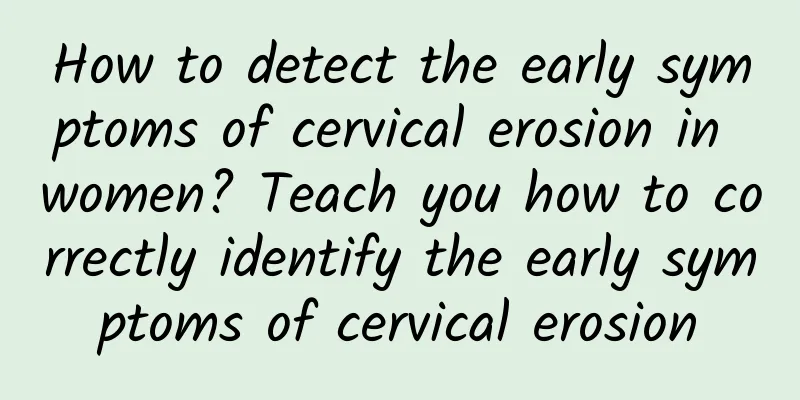What does uterine fibroids look like? What are the dangers of uterine fibroids?

|
Many female friends suffer from uterine fibroids, but their concept of uterine fibroids is still very vague and they don't understand what it looks like. A typical uterine fibroid is a solid spherical mass with a smooth or concave-convex surface. The cross section is a white spiral line with uneven micro-bands. The color of the fibroid section is not much different from that of the uterine muscle wall, and the quality is soft. There is a thin capsule on the surface of the fibroid, forming a pseudocapsule of the fibroid, which is composed of tissue bundles and muscle fiber bundles around the fibroid. The connection between the capsule and the fibroid is loose, and it is easy to peel the fibroid from the muscle wall. There are radioactive vascular branches in the capsule to provide blood nutrition to the fibroid. The larger the fibroid, the thicker the blood vessels and the greater the number. In the center of the fibroid, when the diameter of the fibroid exceeds 4 cm, the vascular branches are reduced by more than cm, and the center of the fibroid is prone to degeneration. 1. Uterine fibroids generally cause clinical symptoms at 8 to 16 weeks of pregnancy. Single fibroids are generally no larger than a child's head, and multiple fibroids are generally no larger than 6 months of pregnancy. Individuals can reach dozens of kilograms and are located in the uterus. Few occur alone, but often multiple. 2. Uterine fibroids can be divided into "intramural fibroids" or "stromal fibroids" according to their growth location and the relationship between the layers of the uterine wall. Intramural fibroids are usually multiple and the number is uncertain. There are usually one or more larger ones, and sometimes there can be many small tumor nodes, distributed all over the uterine wall, fused in irregular masses, forming multiple uterine tumors. Some involve the cervix or deep dome during development, which can be easily confused with primary cervical fibroids. Intramural fibroids have good blood circulation, and generally less fibroids degenerate, which can cause severe deformation of the uterus and affect uterine contraction. Due to the increase in uterine volume and area, it can deliberately cause menorrhagia, excessive menstruation, and prolonged menstrual duration. 3. Myoma tends to develop in the direction of less resistance during its growth and development. When it protrudes from the uterine cavity, its surface is only covered with a layer of endometrium, which is called "submucosal uterine fibroids", and there is even only one pedicle connected to the uterus. Submucosal fibroids become foreign bodies in the uterine cavity, causing the uterus to contract, squeeze and descend, and the tumor pedicle gradually lengthens. When it reaches a certain extent, the fibroid can pass through the cervical canal, vagina, and even protrude from the vulva. At the same time, the pedicle attached to the uterine wall is also pulled, and the inward concavity increases, which can form different degrees of uterine inversion. Due to poor blood transportation of the tumor pedicle, it often extends to the vagina, causing infection, necrosis, and bleeding. |
<<: What are the causes of uterine fibroids? What are the predisposing factors of uterine fibroids?
>>: What causes uterine fibroids? How to prevent uterine fibroids?
Recommend
What are the dietary treatments for menopause?
Women will go through menopause at a certain age....
To cure psoriasis, lose weight first! Weight Control Healing Bonus
To improve psoriasis, you must lose weight first!...
What are the symptoms of chronic cervicitis in women? Six major symptoms of chronic cervicitis in women
Chronic cervicitis is very common in clinical pra...
Enjoy slimming! Blogger Ai Ai reveals 3 types of fruit and vegetable juices
Next, I will introduce some of my favorite juices...
What are the factors causing nonspecific vaginitis?
What are the predisposing factors for nonspecific...
Obesity is like a frog in boiling water, a breeding ground for chronic diseases
"Although I am overweight, I have no physica...
How to regulate the diet of patients with dysmenorrhea
For patients with dysmenorrhea, how to regulate d...
Causes of uterine cysts
The occurrence of uterine cysts may be related to...
What are the symptoms of uterine fibroids? Can uterine fibroids cause irregular menstruation?
People have some different opinions about uterine...
How comfortable is it for men and women to sleep naked? Don't be embarrassed, here are 7 benefits, only those who have tried it will know
Once, a middle-aged man, Mr. Li, came to my clini...
Habitual abortion cure rate
Although miscarriage is very harmful, there are m...
Why does vaginal discharge turn black? How to prevent abnormal vaginal discharge?
Leucorrhea is a liquid secreted by women. Normal ...
Drug treatment of endometrial tuberculosis
Endometrial tuberculosis often follows pulmonary ...
Develop a physique that is easy to lose weight! Use spare time to exercise
The weather is getting hotter, which means the se...
Which is the most reliable method for diagnosing cervical warts?
The sudden onset of cervical warts makes people f...









